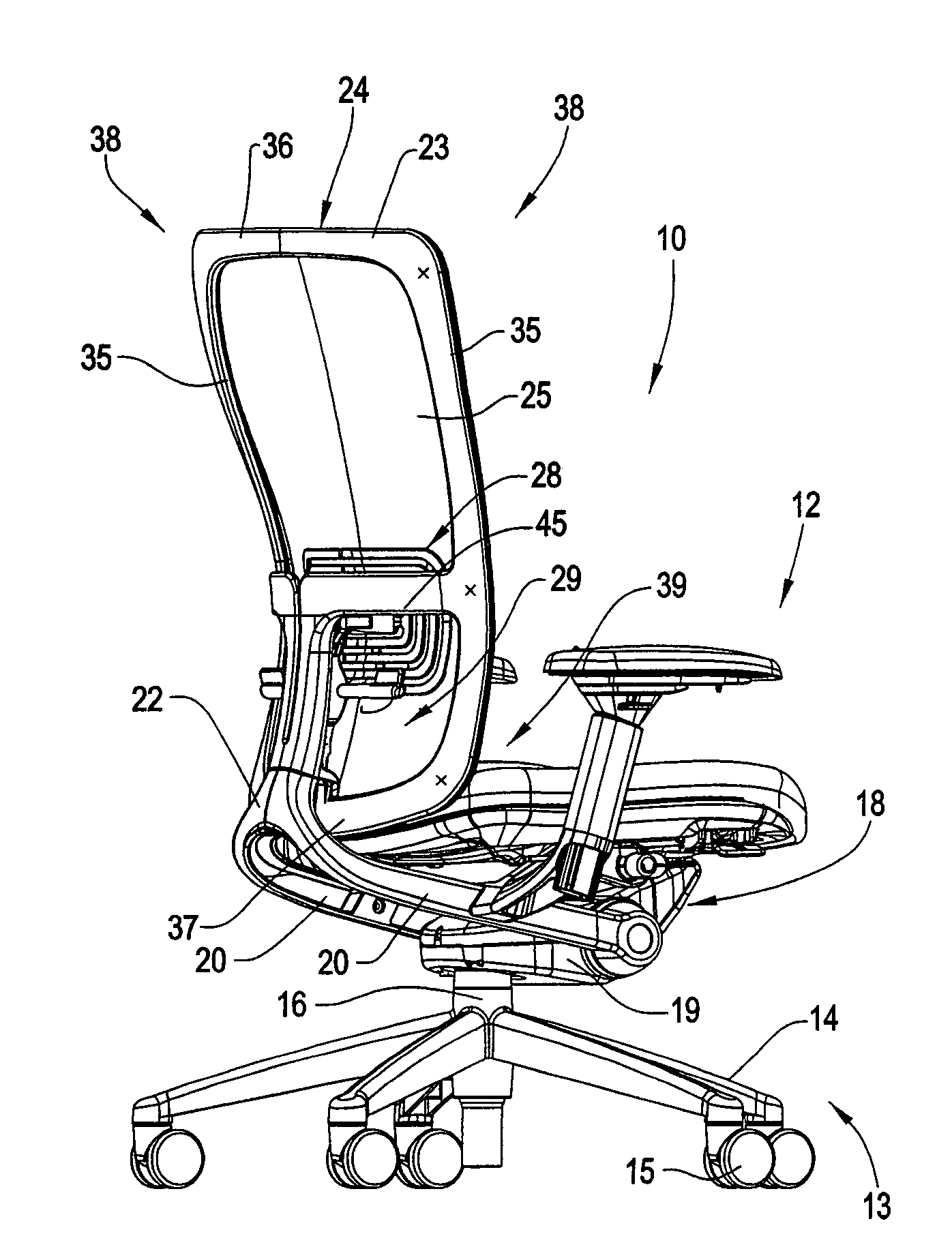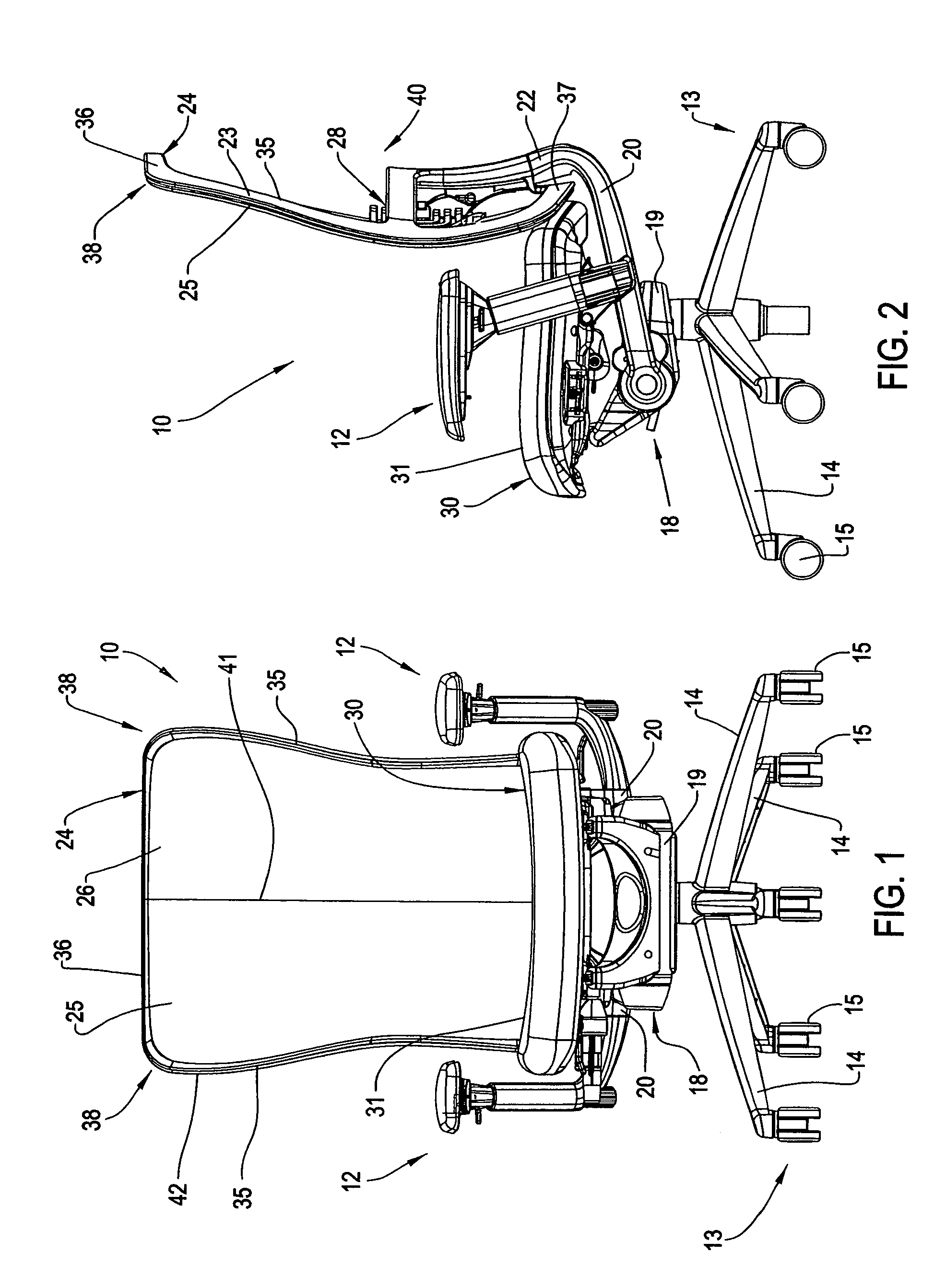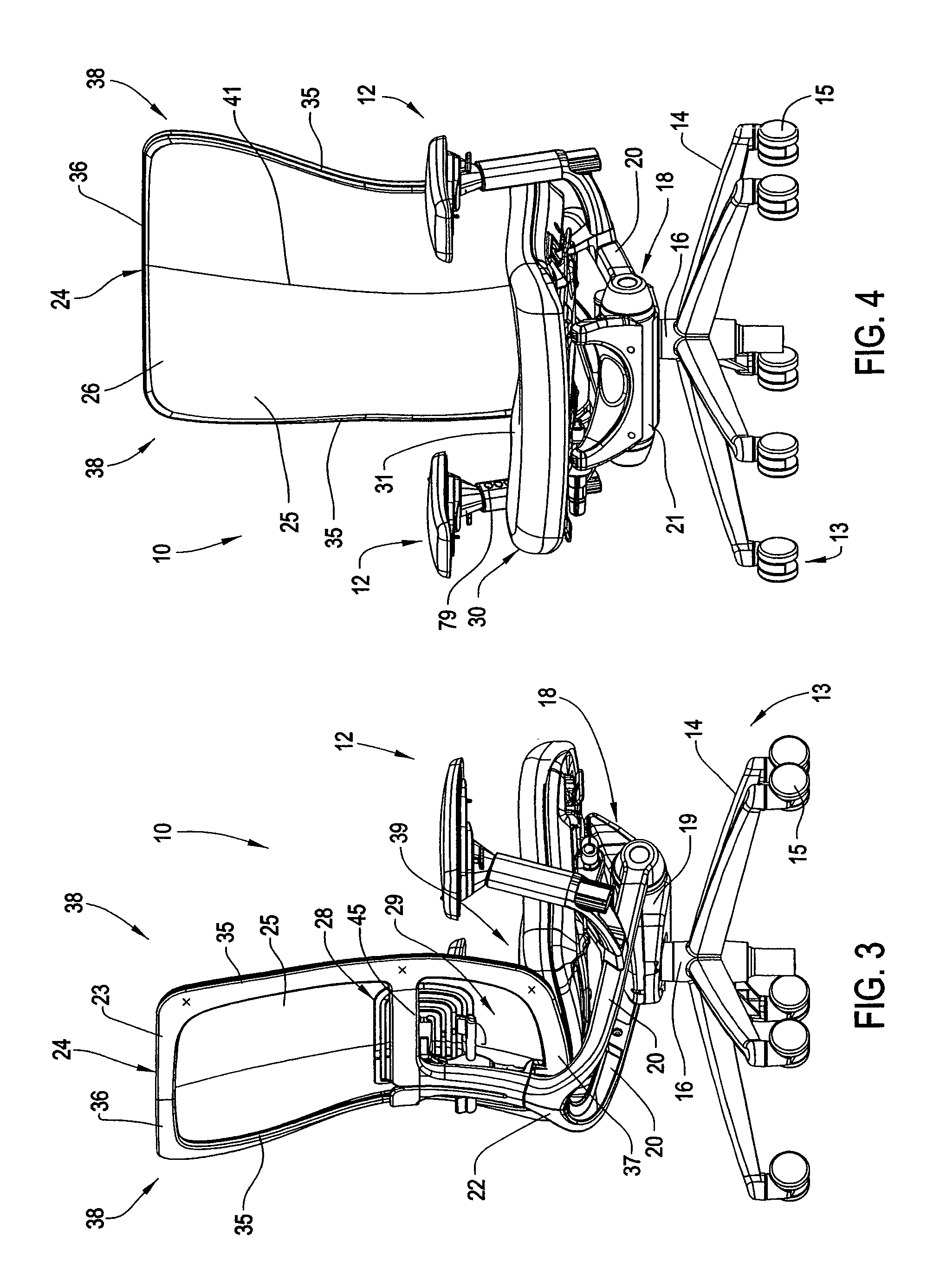Chair back with lumbar and pelvic supports
a technology of lumbar support and backrest, which is applied in the field of office chairs, can solve the problems of difficult design of single chair configuration that satisfies, uncomfortable lumbar support, etc., and achieves the effect of easy adjustment to the shape, increased variation of pressure, and easy feeling
- Summary
- Abstract
- Description
- Claims
- Application Information
AI Technical Summary
Benefits of technology
Problems solved by technology
Method used
Image
Examples
Embodiment Construction
[0048]Referring to FIGS. 1-4, the invention generally relates to an office chair 10 which includes various inventive features therein which accommodate the different physical characteristics and comfort preferences of a chair occupant and also improve assembly of the chair 10.
[0049]Generally, this chair 10 includes improved height-adjustable arm assemblies 12 which are readily adjustable. The structure of each arm assembly 12 is disclosed in U.S. Provisional Patent Application Ser. No. 60 / 657,632, filed Mar. 1, 2005, entitled ARM ASSEMBLY FOR A CHAIR, which is owned by Haworth, Inc., the common assignee of this present invention. The disclosure of this patent application is incorporated herein in its entirety by reference.
[0050]The chair 10 is supported on a base 13 having radiating legs 14 which are supported on the floor by casters 15. The base 13 further includes an upright pedestal 16 which projects vertically and supports a tilt control mechanism 18 on the upper end thereof. Th...
PUM
 Login to View More
Login to View More Abstract
Description
Claims
Application Information
 Login to View More
Login to View More - R&D
- Intellectual Property
- Life Sciences
- Materials
- Tech Scout
- Unparalleled Data Quality
- Higher Quality Content
- 60% Fewer Hallucinations
Browse by: Latest US Patents, China's latest patents, Technical Efficacy Thesaurus, Application Domain, Technology Topic, Popular Technical Reports.
© 2025 PatSnap. All rights reserved.Legal|Privacy policy|Modern Slavery Act Transparency Statement|Sitemap|About US| Contact US: help@patsnap.com



